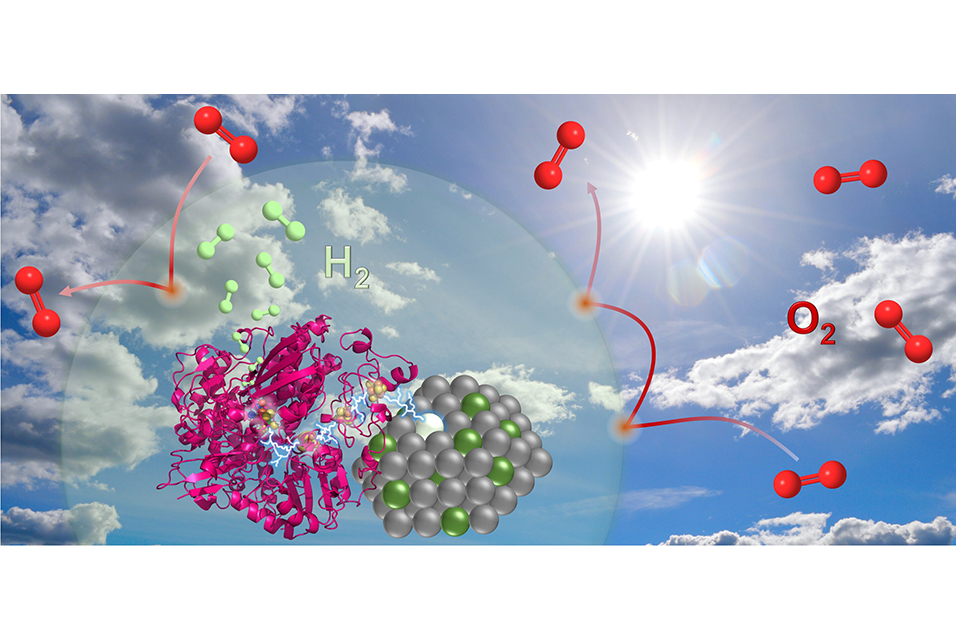SWANSEA.- Experts from Swansea and Grenoble have joined forces to develop a practical way to produce green hydrogen using sustainable catalysts.
The researchers now hope their work will be a major step towards making green hydrogen production simpler, more affordable and more scalable.
Dr. Moritz Kuehnel, senior lecturer in
Swansea University's chemistry department, said, "In our work we use natural enzymes—hydrogenases—to generate green hydrogen using sunlight. Unlike synthetic catalysts which are based on precious metals like platinum, hydrogenases contain only earth-abundant elements such as iron and nickel. However, these enzymes are very sensitive and quickly deactivate when exposed to air, making their practical use near impossible."
The team now has developed engineered solvents which enable hydrogenases to function in air. Simply placing them in these solvents instead of water makes them more active and more stable, so that they can be practically used in air to generate hydrogen.
Dr. Christine Cavazza, senior scientist at CEA Grenoble, added: "We integrated synthetic nanoparticles with natural enzymes into so-called hybrid materials, which combine the best of both worlds to achieve new, superior functionality. TiO2 nanoparticles are excellent at using sunlight to generate charges and hydrogenases are extremely efficient in using these charges to generate green hydrogen.
"Combining the two therefore allows for the efficient generation of green hydrogen from sunlight, something none of the separate components are capable of."
The research brought together Swansea University expertise in photocatalysis, solvent design and its focus on delivering practical solutions to complex problems and combined this with knowledge of extracting natural enzymes and utilizing them for renewable energy conversion at the Alternative Energies and Atomic Energy Commission (CEA) and Université Grenoble Alpes (UGA).
The collaboration came about as the result of Swansea's strategic partnership with UGA. The researchers' findings have just been published in the journal Angewandte Chemie.
Dr. Alan Le Goff, senior scientist at CNRS Grenoble said, "This work is an inspiring example of how combining the expertise of multiple partners in an international collaboration can lead to ground-breaking research advances."
Green hydrogen is needed as a fuel for the decarbonization of transportation—especially HGV, long-haul aviation and the marine sector, where electrification is not yet viable—as well as the chemical industry, especially fertilizer production and for the energy sector.
However, the costs of producing green hydrogen currently limit its use on a large scale which is why this research is so significant for the future.
Using sustainable catalysts such as hydrogenases instead of expensive platinum can lower the cost of electrolyzers and fuel cells, making green hydrogen cheaper to produce and to use. It also lowers dependence on imports which can be disrupted by external factors.









